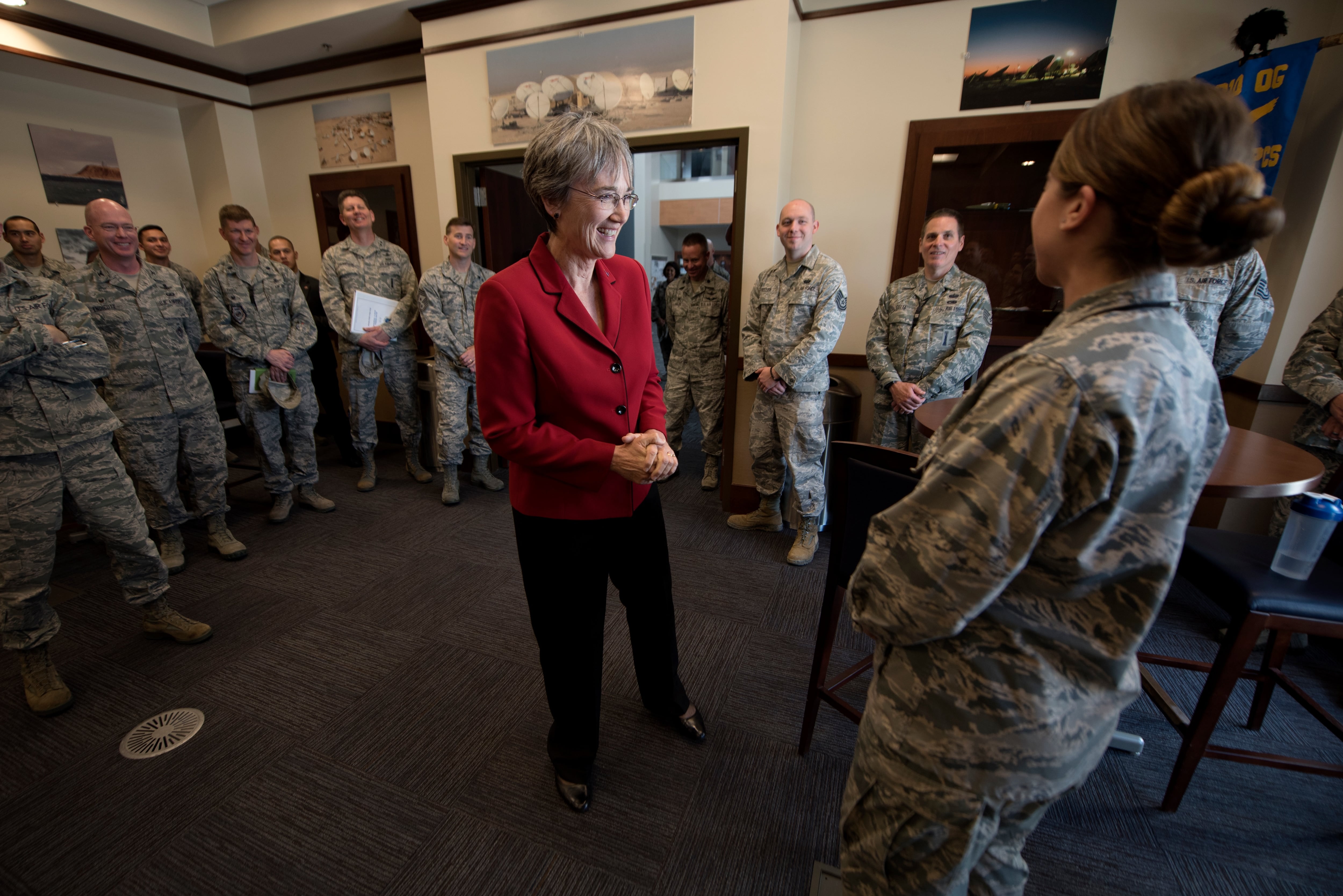WASHINGTON — Over the next year, the Air Force will review and revise its science and technology strategy, giving a second look to the service’s cutting edge research and development investments that could bear fruit in future decades, the service’s top civilian said Monday.
“From time to time, it’s important to refresh our science and technology strategy, to step back from the programs and problems of today and project 10 or 20 years into the future, to see what kind of Air Force we might have at that time,” said Air Force Secretary Heather Wilson during a speech at the Air Force Association’s Air, Space and Cyber Conference.
“This strategy will guide both what we prioritize for research and how we conduct our research. It will define our highest research priorities to be sure, but it will also help us strengthen new relationships between our Air Force and the science community, our universities and our industry partners,” she continued. “As you might expect of a former university president, I am particularly interested in how the Air Force can strengthen and deepen our ties with American universities on basic and applied research.”
The effort will be led by the Air Force Research Laboratory, while the service’s scientific advisory board will conduct a parallel study, she said. An Air Force news release stated that an Air Force Studies board of the National Academies of Science, Engineering and Medicine will also conduct workshops to provide input for the review.
In a June interview with Defense News, Wilson said optimizing the service’s science and technology investments would be a key priority during her tenure as Air Force secretary. Over the past several years, service leaders have focused more on near-term efforts to speed up acquisition timelines and incorporate prototyping and commercial technologies to greater effect.
RELATED

While the Air Force’s fiscal 2018 budget request expanded research and development from $20.2 billion in 2017 to $25.4 billion, most of that added funding will be directed to big name programs like the service’s future fighter, known as Penetrating Counter Air, or the intercontinental ballistic missile replacement program, or Ground Based Strategic Deterrent.
Meanwhile, long-term science and technology investments have stagnated, leading to Wilson’s concerns about innovation. For instance, early stage research and applied research has remained flat from FY17 to FY18 at $1.3 billion, while basic research increased from $500 million to $505 million.
“What is the early stage, path-breaking research that the people who are scientists and engineers say are likely to lead to new ways of doing things for the Air Force?” she said in June.
For years, the Defense Department has been abuzz with talking about emerging breakthroughs in directed energy, Big Data analytics, automation, 3D printing and hypersonics, among other technologies. However, Wilson said it was important that the Air Force not to proscribe which investments might be most useful.
“In a large bureaucracy, most things will continue on their current course, unless somebody like me says, ‘Why don’t we just scan the horizon for a second and see how we might manage innovation?’” she said. “That alone causes people to blink for a second and say, ’Well, there’s something we haven’t thought about,’ and put ideas on the table.”
Valerie Insinna is Defense News' air warfare reporter. She previously worked the Navy/congressional beats for Defense Daily, which followed almost three years as a staff writer for National Defense Magazine. Prior to that, she worked as an editorial assistant for the Tokyo Shimbun’s Washington bureau.




